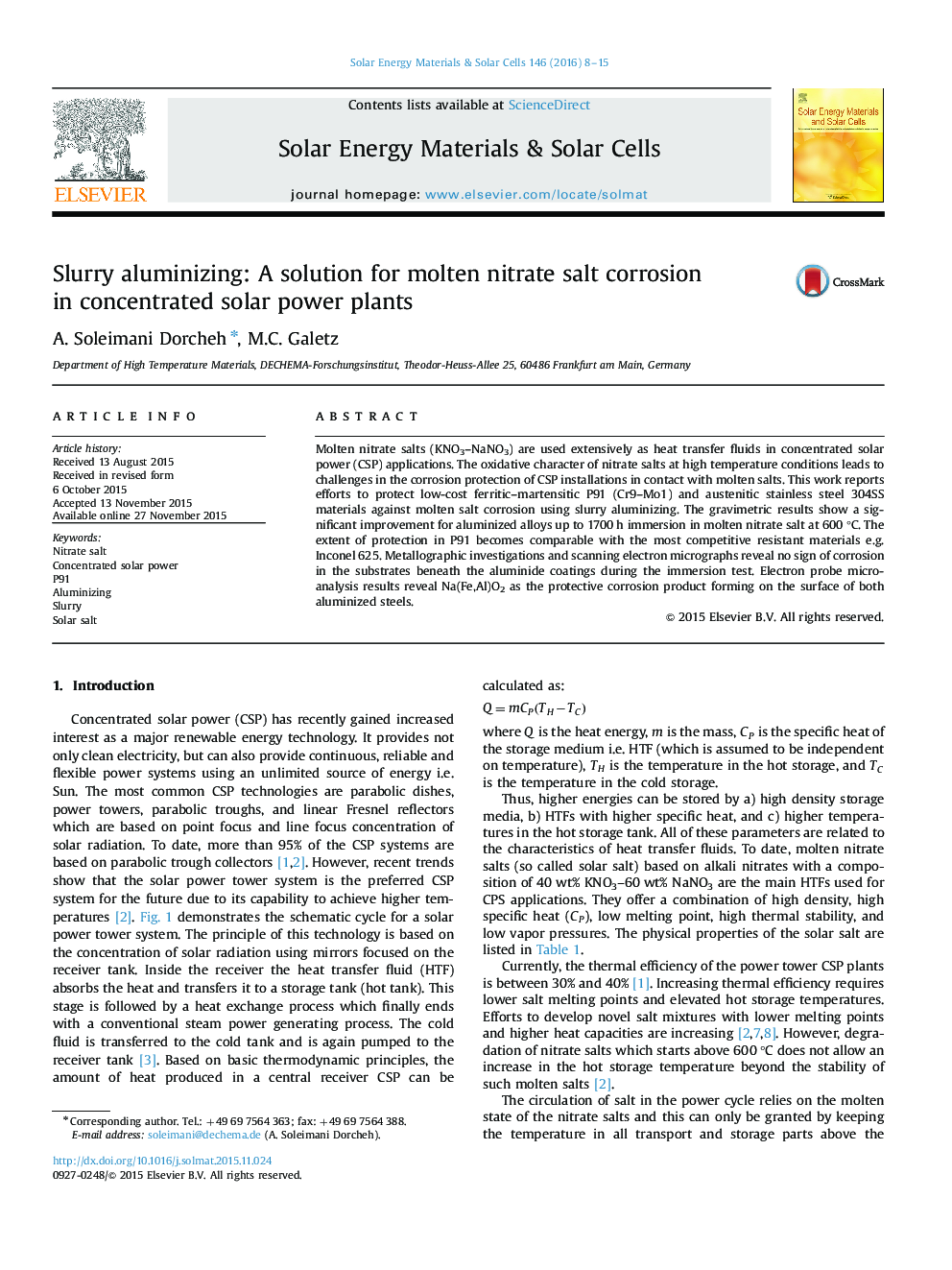| Article ID | Journal | Published Year | Pages | File Type |
|---|---|---|---|---|
| 77637 | Solar Energy Materials and Solar Cells | 2016 | 8 Pages |
•Slurry aluminizing significantly reduces the rate of corrosion in solar salts.•The aluminized P91 shows exceptional corrosion resistance comparable with Ni-alloys•In both aluminized steels, Fe2Al5 is the major phase in contact with solar salt.•Aluminized steels form a continuous Na(Fe, Al)O2 layer at the coating-salt interface.
Molten nitrate salts (KNO3–NaNO3) are used extensively as heat transfer fluids in concentrated solar power (CSP) applications. The oxidative character of nitrate salts at high temperature conditions leads to challenges in the corrosion protection of CSP installations in contact with molten salts. This work reports efforts to protect low-cost ferritic–martensitic P91 (Cr9–Mo1) and austenitic stainless steel 304SS materials against molten salt corrosion using slurry aluminizing. The gravimetric results show a significant improvement for aluminized alloys up to 1700 h immersion in molten nitrate salt at 600 °C. The extent of protection in P91 becomes comparable with the most competitive resistant materials e.g. Inconel 625. Metallographic investigations and scanning electron micrographs reveal no sign of corrosion in the substrates beneath the aluminide coatings during the immersion test. Electron probe microanalysis results reveal Na(Fe,Al)O2 as the protective corrosion product forming on the surface of both aluminized steels.
Graphical abstractFigure optionsDownload full-size imageDownload as PowerPoint slide
